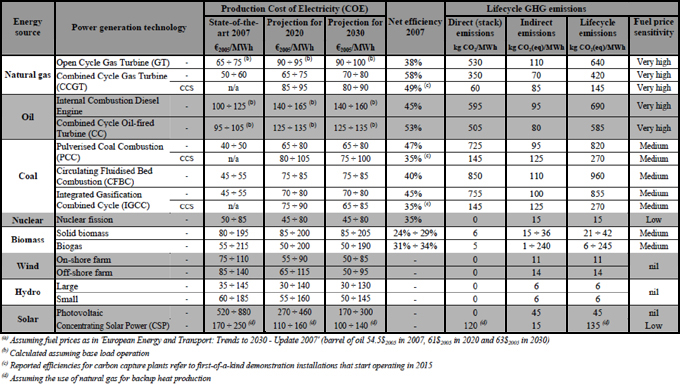The economics of nuclear energy.
What is true and what is false in the Italian debate.
The problem of climate change has now reached top priority, and with it the necessity of moving towards a ‘low carbon society’ has become urgent. It therefore doesn’t come as a surprise that the re-launching of nuclear energy in Italy is declared to be based on the pursuit of this target (low carbon society). In addition, it is also asserted that it will reduce the households’ energy bill. While the first motivation may be true, to a certain extent, the second one is totally unconvincing. Taking facts into account we aim to underline which among the most common arguments in the debate have a sound basis, and which have not.
To address these issues costs must be analyzed, starting with the production costs of a MWh from different sources. As a reference point we can take the figures published by the European Commission in 2008, as they provide current costs in 2007, projected costs for 2020 and 2030, and also GHG emissions per source. Knowledge of GHG (or CO2eq) emissions is a precondition, but not the only one, for calculating the true costs of electricity production for the society.
Figure 1

Source: Commission of the European Communities, (2008), Commission Staff Working Document. Second Strategic Energy Review. An EU Energy Security and Solidarity Action Plan. Energy Sources, Production Costs and Performance of Technologies for Power Generation, Heating and Transport, COM(2008) 781 final.
(GHG: greenhouse gases; MWh: mega watt per hour; CO2eq: CO2 equivalente)
As a matter of fact it is the external costs to the power plant that are responsible for climate change and that therefore call for an international/global commitment to a low carbon society. To estimate these external effects is no easy task, but again the problem has been addressed and we now have several such evaluations. Among the most well-received and internationally accepted methodologies we find ‘ExternE’, which is the product of a research project launched by the European Commission in 1990. By using the ExternE methodology the European Environment Agency has produced the following estimates in 2008.

